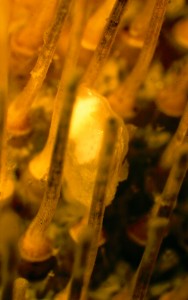 Where’s Waldo? The more relevant question here is, what’s a Waldo? Waldo is a genus name, belonging to a group of bivalves that have been found in various spots around the world. Now two scientists working on the Pacific Coast of North America have found a new species — Waldo arthuri — though it took nearly 25 years to figure it all out. The scientists report their findings in Zookeys.
Where’s Waldo? The more relevant question here is, what’s a Waldo? Waldo is a genus name, belonging to a group of bivalves that have been found in various spots around the world. Now two scientists working on the Pacific Coast of North America have found a new species — Waldo arthuri — though it took nearly 25 years to figure it all out. The scientists report their findings in Zookeys.
Back in 1989, two scientists found a peculiar tiny mollusk, a type of clam, in locations 1,000 miles apart, off the coasts of Santa Barbara, California and Vancouver Island in Canada. The researchers had met up at a scientific conference and talked clams over one of the breaks, quickly realizing they had each found the same thing. But they couldn’t figure out exactly what they had found.
The bivalves were tiny, only a few millimeters in length, with thin, translucent shells and long tentacles. One of the researchers, Diarmaid Ó Foighil of the University of Michigan’s Museum of Zoology, was able to collect some live specimens. “We were looking closely at sea urchins and noticed something crawling on the fine spines covering the urchin body,” Ó Foighil said in a statement. “We were amazed to see that there were minute clams crawling all over the sea urchin.” (In the image above, the clam can be seen among sea urchin spines.)
Why it took a couple decades to determine that the mollusk was a new species isn’t completely described in the paper, but it seems that W. arthuri looks a lot like other members of its genus. Eventually the researchers turned to DNA sequencing — using the help of another scientist who’s a specialist in clam DNA — to tease out the differences in the bivalves. W. arthuri is indeed a species separate from its closest relative, which lives all the way in the south Atlantic off the coast of Argentina.
The researchers write that finding sister taxa in separate ocean basins isn’t an uncommon phenomenon, but it’s a little odd in this case because all the other known Waldo species live far away in high-latitude southern oceans.
The true range of W. arthuri may be even larger than the stretch from California to Canada. The sea urchin Brisaster latifrons, on which the clam lives, can be found from the Galapagos Islands to the Bering Sea, off the coast of Alaska. It’s possible, the scientists say, that the new Waldo can be found all along that area as well.
Image by Diarmaid O’Foighil, via EurekAlert
